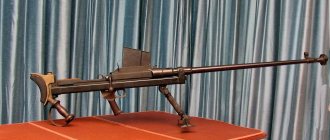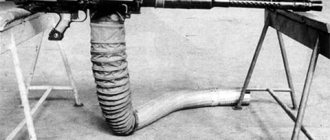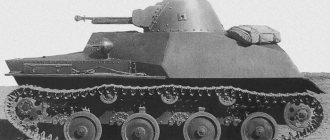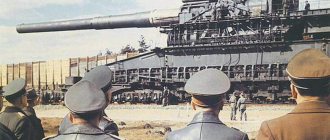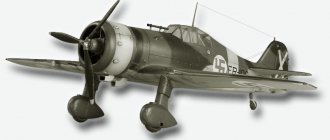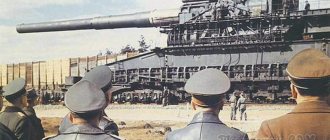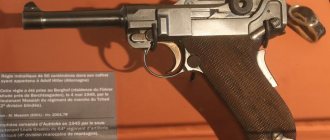Fully equipped. What was the best quality uniform from World War II?
The combat effectiveness of soldiers in any era largely depended on the equipment, clothing, and shoes with which the troops were supplied. Summer and winter uniforms were provided for Red Army soldiers. For winter, cloth tunics and trousers. For the summer, light cotton ones, in which one could endure the hardships of hiking and climatic conditions. They were given sheepskin coats, wool overcoats, and raincoats for protection from the rain. It is noteworthy that the highest commanders of the Red Army considered it very important to personally inspect the quality of equipment. So. Red Marshal Semyon Budyonny personally tested helmets for Red Army soldiers and shoes for cavalrymen. He tried to cut steel helmets with a saber, Cossack style. He was satisfied with the result and ordered the protective headgear to be put into production.
To carry entrenching tools, Red Army soldiers were provided with special covers. for example, the 1942 model duffel bag had a compartment for attaching an ax. During the Great Patriotic War, knitted items were sent to the front line from all over the country. And entire garment factories, by order, sewed quilted padded jackets and trousers, hats with earflaps. Participants in the battle of Moscow left memories from which it follows: the things for the Red Army that arrived at the front line were very durable, designed for the harshest winter. Felt boots saved the feet of many soldiers from frostbite in the severe frosts of December 1941. No wonder the Germans considered it lucky to get Russian felt boots as a trophy.
German supply services placed too much faith in the Führer's plans, supplying insufficient warm clothing for soldiers on the Eastern Front in late 1941. As a result, the Germans had to begin extensive requisitioning of warm clothes from the local Soviet population. The troops assigned special teams to weave straw boots. Brochures were published that described methods for insulating existing uniforms with improvised means that could be obtained, as it seemed to theorists in Berlin, in Russian villages devastated by the war.
German soldiers near Moscow. Caricature of Kukryniksy in 1941
The uniforms of German soldiers were made at the Hugo Boss sewing plant. It included the required elements: a steel helmet with a double-sided cover, an overcoat, a gas mask case, a sword belt, rifle pouches, a raincoat, and a bowler hat. The Wehrmacht uniform was designed for European conditions of use. The campaign in Russia changed approaches to tailoring and materials. The Germans began to take a closer look at the enemy’s uniforms, adopting the cut of things that were in use in the Red Army. So German officers and generals very soon began to wear fur hats with earflaps. Such headdresses were partially supplied to the Wehrmacht from Finland and Sweden on orders from private companies. In 1942, the Wehrmacht began to order various warm items in large quantities: jackets, quilted pants, knitted mittens and gloves, sweaters and socks.
British soldiers used a field uniform: a collared blouse or wool shirt, a steel helmet, loose trousers, a gas mask bag, a holster on a long belt, black boots and an overcoat. By the beginning of World War II, new uniforms were adopted. Infantrymen were required to wear boots with thick soles and tapes. British shoes were considered unwearable. After the end of the Second World War, stocks of British uniforms were transferred to the populations of European countries affected by the fighting.
US soldiers in uniforms designed for combat in cold weather
But, perhaps, the most thoughtful and high-quality equipment turned out to be, according to a number of military historians, the uniforms of US Army soldiers. An American soldier in the Asian and European theater of operations was entitled to the following set: a woolen shirt, a light field jacket, trousers with linen gaiters, low brown boots, a helmet, and a cap. All these things have replaced the twill jumpsuit. Zippers were widely used in American uniforms. For warm weather, the designers developed a cotton version, and for cold weather, an insulated wool version. A set of uniforms for operations in severe frost conditions has become especially convenient and reliable. It included the following things: a warm parka jacket and laced boots with dog fur, a hat made of bear and deer fur.
The Japanese used insulated uniforms in areas of northern China. For operations in Indonesia, a tropical uniform made of khaki cotton fabric was required. During World War II, a set of three types of uniforms was developed for Japanese military personnel. It included a uniform, trousers, an overcoat and a cape. The uniform set also included a steel helmet with or without a star, boots or boots. Japan outfitted its soldiers very prudently, without any excesses.
Japanese soldiers in the Philippines in 1942
The most archaic, perhaps, remained the uniforms of the French and Italians at the beginning of the Second World War. Only mountain rangers were provided with warm clothing. Therefore, the Italians suffered greatly from the frivolity of their quartermasters when they found themselves in the cold in the Volga steppes. At Stalingrad, the Italians lost up to ten percent of their personnel from frostbite due to ill-conceived winter uniforms. And the temperature near Stalingrad sometimes dropped to the fatal level of minus 42 degrees Celsius.
Winter and autumn uniforms of US soldiers during World War II (12 photos)
Author: curcha
June 23, 2022 10:13
Tags: World War II World War II history uniform
8619
12
This post is dedicated to everyone who is interested in military uniforms and simply the history of World War II. Very interesting and rare information
0
See all photos in the gallery
0
Winter. American troops during World War II were poorly equipped with winter uniforms. Instead of warm down or fur jackets, soldiers and officers wore overcoats and parkas. The Americans felt all the inconsistency of this form in the winter in Belgium. Frostbite occurred everywhere, and deaths from hypothermia were also recorded. In 1939, the US Army adopted a new overcoat model called the Melton OD Wool Overcoat. It was this model that became the main overcoat in the US Army for many years. The long, fitted, double-breasted woolen overcoat had a folded collar with lapels, two side slit pockets and a fragmentary lining. It would seem, what could be simpler? However, this overcoat also had secrets. One of them was a special pocket design. Inside the overcoat, the pocket was sewn on only one side and fastened with a button on the other. It can be assumed that this was done so that the fighter could get something from his trouser pocket without lifting the heavy hem of his overcoat.
×
0
The coats of the overcoat were also not as simple as they seem. Both floors could be folded inside and fastened there with buttons, thereby freeing the legs. Of course, this decision was not something new, but its relevance remained undeniable. Among other things, the overcoat had shoulder straps fastened with buttons and a rear strap that held the overcoat together. The strap was also secured with two buttons.
0
Like many other types of uniforms in the US Army, the overcoat has been modernized, but only slightly. In the second pattern, which appeared in 1942, the overcoat had plastic buttons instead of gilded steel buttons, exactly copying the buttons of the “early” model.
0
The US Army adopted a parka called the Alpaca Lined Overcoat in 1941. The parka was a long coat made of thick cotton fabric lined with faux fur. Having a hood and two side sewn pockets, the parka of the first sample was very different from the Field OD Arctic Jacket. It was longer than the jacket, although it was fastened with a zipper and an external button flap. Also included with the parka was a belt with a wide buckle. In the second pattern, the strap was made from a narrow webbing and had a clasp, like the chinstrap of an M-1 helmet.
0
But this was not the only innovation in the 1943 model park. In this pattern, it received additional slit side pockets, a drawstring on the hood, an additional button on the collar and snap-fastened cuffs. However, the most important innovation was the removable liner. It was made, as in the first sample, from faux fur and had elastic cuffs. It was attached to the outer part with buttons. Despite their convenience and practicality, it cannot be said that the parks were a great success among the soldiers at the ETVD.
0
The main outerwear of the American infantryman during the Second World War was the jacket. Cold European weather forced US soldiers to wear jackets even in the summer. Anyone who saw photo and video chronicles of the landing of American troops in Normandy probably noticed beige jackets on the soldiers. These were the M-1941 Field OD Jacket.
0
To be fair, it should be said that the development of the M-1941 jacket began back in 1940, but, as you might guess, the first sample was put into service only in 1941. Becoming something completely new in the line of outerwear for an American soldier, the jacket was designed by General Parsons, who at that time was in the 3rd US Army Corps. Taking a simple civilian windbreaker as a basis, Parsons created an extremely comfortable and practical cotton jacket lined with a mixture of cotton and wool.
0
The jacket, with a high belt fastened with two small side straps secured either with buttons or small buckles, also had a folded collar with lapels, cuffs fastened with buttons, two side mortise pockets with flaps and was fastened with a zipper, which was hidden by an external flap c 6 buttons. Like almost all new uniforms, the M-1941 jacket did not restrict movement, but was durable and warm. It dried quickly, but at the same time could hold water for a long time.
0
The second most popular was the Winter Combat Jacket, which became more popular as the Tanker Jacket. The jacket got its nickname due to the specifics of its use. Initially, this model was developed exclusively for tank and motorized units, but due to its successful design, it quickly became popular in infantry units.
0
The first example of this jacket was developed in 1941 and was a lightweight cotton jacket with an elastic waistband, cuffs and collar. Like the M-1941, the Tanker also had a zipper, but unlike its infantry “comrade” it did not have an external valve. In its first version, the Tanker Jacket had sewn pockets without a flap, but already in the second sample the jacket's pockets become mortise. In fact, this was the only innovation, but, as in the case of the M-1941 jacket, the second model of the Tanker Jacket became extremely popular among soldiers. Part of the popularity of this model is the merit of General George Patton.
0
As a permanent commander of tank units, Patton had an understandable weakness for everything related to armored vehicles. The Tanker Jacket was no exception. There are several photographs of General George Patton wearing this jacket with the US 1st Armored Division patch sewn onto the chest. It was after Patton that the fashion arose among the crews of various combat vehicles from different units to place the divisional patch on the chest rather than on the shoulder.
Source:
More cool stories!
- The job of a car mechanic is full of surprises.
- An 11-year-old man was bedridden and cured himself
- Magnificent seven facts about everything in the world
- Finds from the La Pomoika boutique
- When a date didn't go according to plan: stories from the Internet
Tags: World War II World War II history uniform
Did you like the post? Support Chips, click:
21 27 -6
Did not like
-6 0
9
Partner news
Soviet soldiers in the Great Patriotic War
The entire burden of the devastating defeats of 1941 and the glorious victories of the subsequent period fell on the shoulders of the valiant fighters of the Red Army - the Workers 'and Peasants' Red Army.
This was the name the armed forces of the USSR bore until February 25, 1946, when the Red Army was officially renamed the Soviet Army, whose history, in turn, ended amid the roar of the collapse of a huge country, whose leaders were late with the vital restructuring. Video version of photographs of soldiers. Years go by, entire decades pass, and the memory of the events of seventy years ago is erased, when our soldiers forged the triumphant victories of the Second World War and the Second World War with their lives and deaths. Even on the territory of the former USSR, not every schoolchild will accurately remember the states and peoples that were part of the warring parties - the Anti-Hitler coalition and the Axis countries. What then can we say about the Western world, where many children and adults seriously believe that the Russians dropped atomic bombs on Hiroshima and Nagasaki.
Soldiers inspect war trophies captured in battle, September 19, 1941. However, domestic and foreign scientific experts agree, because they know very well who bears the main credit for the defeat of the military machine of the Third Reich. This powerful, disciplined, perfectly functioning Nazi rink did not know defeat until the beginning of the Great Patriotic War, when, after the brave and inexperienced Poles, self-confident French and strong British, it met desperate warriors of the multinational Soviet power on the battlefield. The victorious Nazis set out on the path that would lead to the collapse of the Thousand-Year Reich, which could not stand the test of the Russian winter and the Asian fanaticism of the people inhabiting one-seventh of the land.

